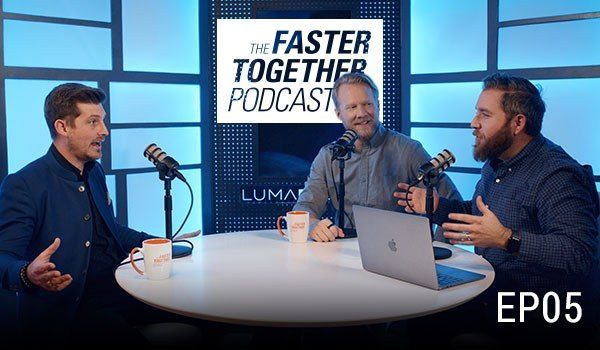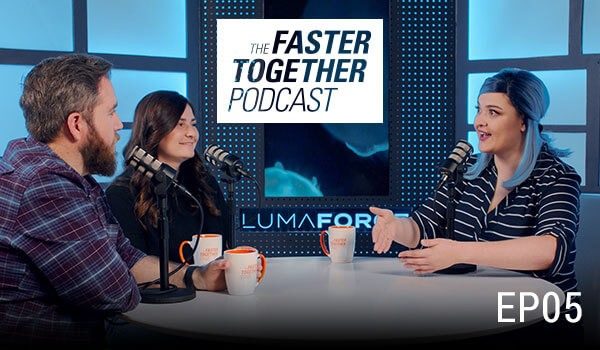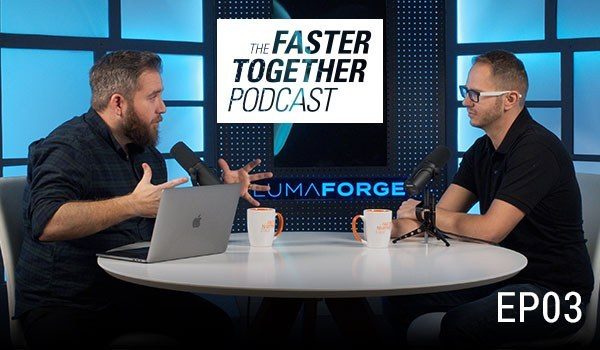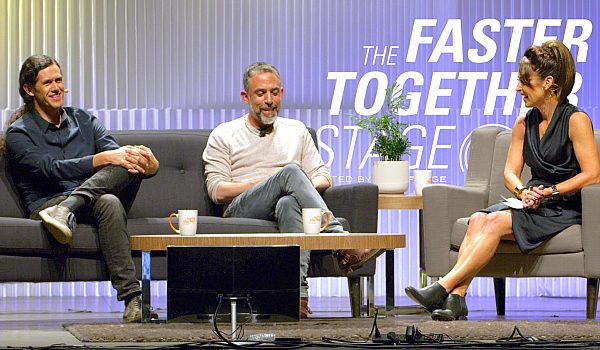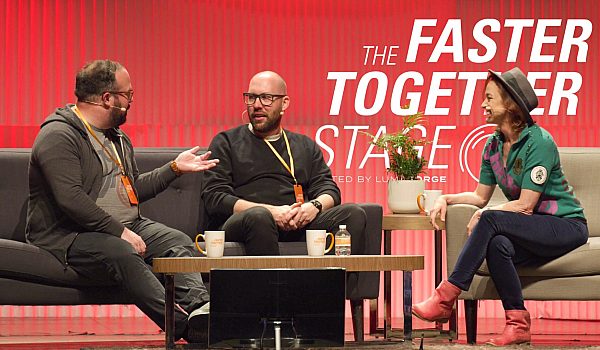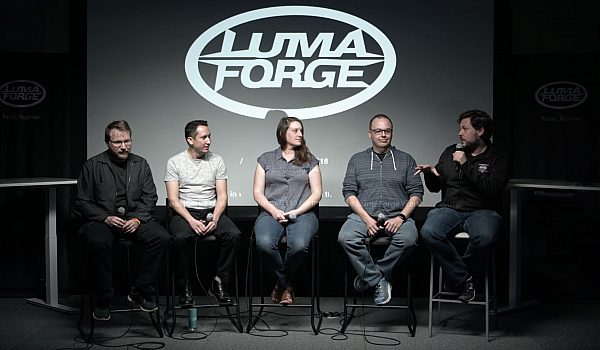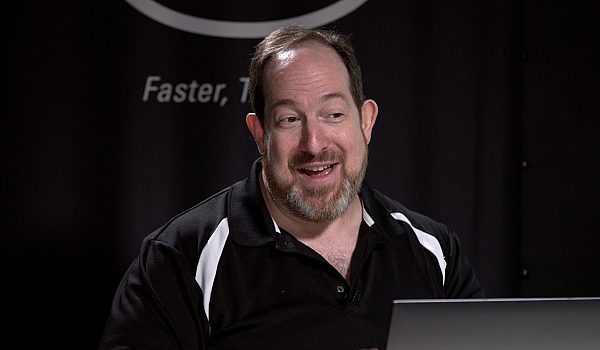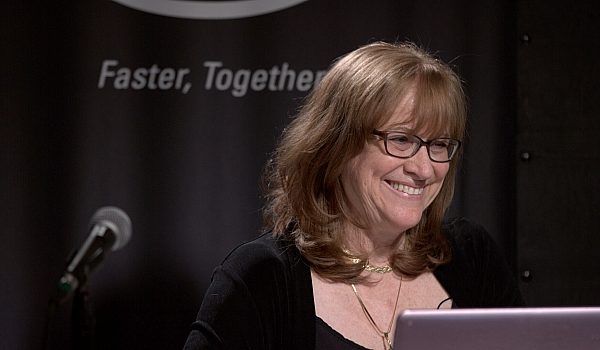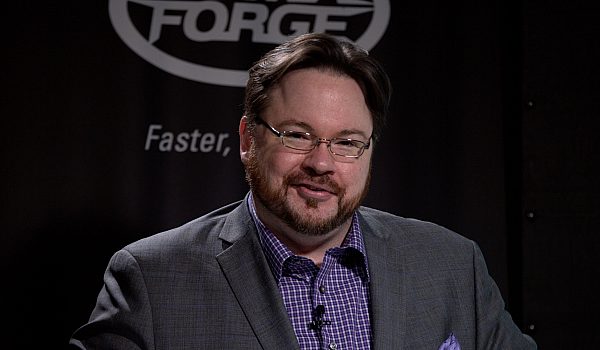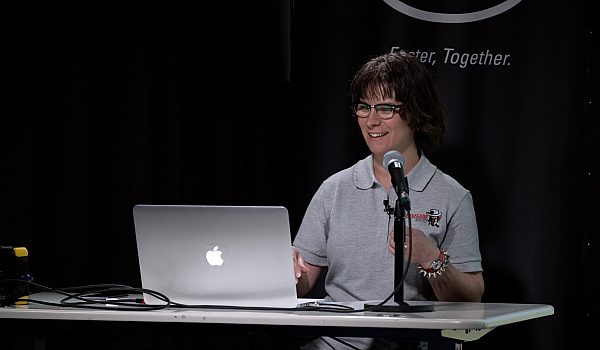Sven Pape of This Guy Edits gives 6 tips to telling a better story through editing. He explains the importance of starting with a good hook. You also need a strong point of view within your scene. Pacing your scene can generate emotion.
Use drama to tell your story rather than exposition. Use contrast to intensify emotion. Make your audience feel empathy for your protagonist. Using these techniques, you can make your stories even more compelling.
- Yes, this will be a very short presentation. There's only one thing you need to know to be an editor. Before I get to that, I am an editor. I do a lot of documentary and independent feature work I really enjoy it, because both of these genres are very creative for an editor to be a storyteller. I'm starting to become more and more a YouTuber and I have this YouTube channel that really focuses on storytelling. And that's sort of the one thing that I feel like I'm most excited about when it comes to editing. I'm not a very technical person and just a few months ago, I did a video with that title, "The One Thing That Will Make Your Editing Better", and I'm sort of gonna break down that um, video that I made right here and play some of those parts. But, uh, so that one thing is, to always tell a story. And that sounds like an obvious thing, and it took me the longest time to really understand as an editor that I really, um, in a position, and have this responsibility to tell a story. And often times I find when I work with junior editors or interns, um, that that concept is not quite there yet. That it's really, it's not just shots, it's not just music, it's not just putting things together to create an effect, but you really are telling a story. And one way to do that is really how you get into it. And so I'm just gonna show you a little clip from a movie, Hello High Water and show you how they get into that film.
- [Narrator] The opening shot of a great film is often noteworthy. It's a kind of strong choice that let's you know you are in good hands. While this example of Hello High Water is a oner, which is an uninterrupted single take, it really includes several shots and in a way, editing. Stephen Suter Brook talks about the three shot rule. What he pays attention to in someone else's work. He says, "After the first three shots, "I know whether this person knows what they're doing "or they don't." So in a way, what he's saying is, that if you love the opening, you're likely going to enjoy the film. The opening, or the hook, is one element of good storytelling. It's the original and personal visual expression. The kind of creative instincts of a film maker that understands how to tell a story.
- ugh!
- quiet!
- So there you go. Um, I was lying. There's actually a couple of things you can do to tell a story better and one of those is how you get into it. And it doesn't only just apply how you get into your film, but it applies to every scene. And that decision you might not have to make right at the beginning as you're trying to figure out what that edit is going to be, but ultimately you're gonna have to come back to that moment and decide how you're going to introduce that next scene. And it's very important for the beginning of a film and each scene because you're making a deal with the viewer. And you're trying to earn that goodwill for them to go along on that journey. Um, another thing that I realized as I was growing as an editor and everything that I'm talking about, it's still a learning journey for me, so I don't feel like I've arrived there. These are things that I feel like, oh, they are important. But it could be a changing lesson for me as well, is to have a point of view. And what I've learned is that story is not just the things, the information that we share, it's also the way, how we share this information. And so, story can be broken up into narrative, that's the stuff that happens, and then the narration, that is how you're going to tell it. And it's important to have a point of view.
Often times, there's somebody else who has a vision on the project and you, as the editor, you're serving that vision. But you still need to have a point of view as well, so that you can have that creative conversation with the director and see if you can push that vision of the story, ultimately it's all about serving that story. It's going to be stronger. Um, the third element is going to use breath to shape emotion. So something that I'm noticing more and more now with YouTube, is that there is very little breath in the storytelling. It's all fast, it's all hyper narration. But it is something that is very important, especially in the feature world, where you shape emotion through the time you take to tell that story. And I'm gonna go to another movie called, Manchester By the Sea, and this is a scene that on it's own feels really, really off. But once I really see the film as a whole, it made a lot of sense to me.
- [Narrator] The second thing is breath. The editor makes a thousand little choices how to pace out the scene before the director even gets to see those moments.
- Is he dead?
- Yeah.
- [Nurse] I'm sorry, Lee. He passed away about an hour ago.
- [Narrator] Breath is the pause you give for the information to sink in. Like in Manchester By the Sea where the main character struggles with empathy and seems off, for reasons that become clear much later.
- [Doctor] I'm very, very sorry.
- Thank you.
- Hello, George.
- Nice to meet you.
- How're you holding up?
- Oh, greif, you know?
- [Narrator] Breath creates tension and let's the audience not just see, but feel.
- Where's my brother?
- He's downstairs, you could see him, if you want.
- [Narrator] This is held by the choppy cutting to the many different camera angles.
- As I told you on the phone--
- Ah, this.
- [Narrator] As the editor, you're shaping the rythym of each moment, so that the viewers can have, in this case, an experience of disorientation.
- Sorry.
- It's okay, buddy.
- You're all right.
- So this was a great example because it's, um, it's sort of disruptive and it feels like the editing is off but in the context of the movie, it makes a lot of sense. And often times you're trying, when you're telling the story, you're trying to be invisible, but I thought this was an very interesting example of actually showing editing and how it does shape emotion. The fourth thing is drama. So when you're telling something, when you're giving information, often times it's boring. It's like when you have two people talking about what's going to happen or what is happening to that third person that isn't in the room, um, that is sharing information so that the audience gets that information, but it often is boring unless it is dramatized. And David Mamet wrote a staff memo to his writers on a TV show called, The Unit. And he said, "The next scene that you show me, "please make sure that you've answered these three questions "before you write that scene "and you better have a good answer." Because he was feeling he was getting scenes that share a lot of information and very little drama. And it's, he boiled it down to, who wants what? Why right now? And what happens if she doesn't get it? So you have a main character with a goal and an obstacle, and that goal has some immediate urgencies, some stakes.
And by thinking of every scene through those three questions, often times you can shape that scene and dramatize it even if you have a lot of information in there, by really focusing in on the main character's goal. The fifth thing that I found is that contrast really magnifies. So as you're shaping a story, as you're cutting with music, if you really want to have that music have an impact, it's good not to use music at times. Because then when you do use it, it means more. So contrast magnifies. Another example from Manchester By the Sea, is right here.
- Most people with a particular severe condition, um, the average life expectancy is five to ten years.
- [Narrator] Another important narrative approach is contrasting dark moments with humor.
- It's not a good disease.
- [Narrator] To make them even more effective.
- What is a good disease?
- Poison Ivy.
- Athlete's Foot?
- It's a comedy routine.
- [Narrator] Because darkness if even darker when there's some light.
- You were saying, Dr. Beth.
- It's Dr. Betheny, dad. Try to get it right.
- I do not see where the humor lies in this situation.
- [Narrator] Yes, again, it's in the script, performed by the actors and orchestrated by the director, but it's the editor who has to put it together in a way that connects the narration.
- Very good, so that's another example of using contrast. So, um, I can't remember what other editor had said, but he said basically his job is to create a rhythm and then break it. And by breaking up that rhythm, you're creating surprise. And while storytelling needs to be plausible, it also needs to be surprising, otherwise, it becomes predictable and the audience gets ahead of the story. And contrast is one way of doing that. The last thing that I've discovered so far, and I'm sure there are gonna be more and more elements as I continue on this surge as a storyteller, but the last thing in there, I think, is the most important thing is to create empathy. Often times, films actually create sympathy, where you sort of understand what somebody's going through, but you're not connecting on an emotional level, in a way that it means something to you. And so, empathy is something that is stronger than sympathy and is something that you should aim for as you're telling a story. I found three elements that could help you find empathy, that blogger Jim Barker identified.
So if your character is vulnerable, has valued traits, a goal that we can connect to on a universal level, selflessness, has been treated unjustly, is going through change or suffering, those could be elements that make us understand and connect to a character in a much deeper level. The movie that I recently saw was Nocturnal Animals. I don't know if you've seen the film, but it is a prime example of empathizing with a character to the point where you almost cannot see the film because you're feeling so terribly engaged with what's going on, on screen. I was looking for a good scene, but unfortunately, I don't think we have the time. I'd rather show a video that explains a little bit better, or more, what the difference is between sympathy and empathy.
- [Narrator] So what is empathy and why is it very different than sympathy? Empathy fuels connection. Sympathy drives disconnection. Empathy, it's very interesting. Theresa Wiseman is a nursing scholar, who studied professions, very diverse professions, where empathy is relevant and came up with four qualities of empathy. Perspective taking, the ability to take the perspective of another person or recognize their perspective as their truth. Staying out of judgment, not easy when you enjoy it as much as most of us do. Recognizing emotion in other people and then communicating that. Empathy, is feeling with people. And to me, I always think of empathy as this kind of sacred space, when someone's kind of in a deep hole, and they shout out from the bottom and they say, "I'm stuck. It's dark. I'm overwhelmed." And then, we look and we say, "Hey!" And climb down. "I know what it's like down here and you're not alone." Sympathy is, "Ooh!" "It's bad, uh huh." "Uh, no. "Do you want a sandwich?"
Empathy is a choice and it's a vulnerable choice because in order to connect with you, I have to connect with something in myself that knows that feeling. Rarely, if ever, does an empathic response begin with, at least. I had a, yeah. And we do it all the time, because you know what? Someone just shared something with us that's incredibly painful, and we're trying to 'silver-lining' it. I don't think that's a verb but I'm using it as one. We're trying to put this little silver lining around it, so. "I had a miscarriage." "Oh, at least you know you can get pregnant." "I think my marriage is falling apart." "At least you have a marriage." "John's getting kicked out of school." "At least Sarah is an A student." But one of the things we do sometimes in the face of very difficult conversations, is we try to make things better. If I share something with you that's very difficult, I'd rather you say, "I don't even know what to say right now. "I'm just so glad you told me." Because the truth is, rarely can a response make something better. What makes something better, is connection.
- So as an editor, really, you are the first person that gets to see the film. You are, as the editor, the first audience, and you have that opportunity to always tell a story. Thank you so much.


 Mobile
Mobile
 Tower
Tower
 R24
R24
 Builder
Builder
 Manager
Manager
 Connect
Connect
 Kyno
Kyno
 Media Engine
Media Engine
 Remote Access
Remote Access
 Support
Support
